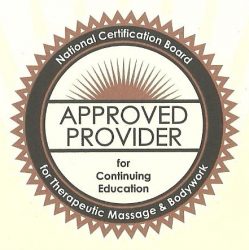I’ve had a few meltdowns over e-mail in the past couple of weeks. In spite of my attendance at one of Michael Reynolds‘ brilliant presentations on how to be an e-mail ninja and have a “zero inbox,” I confess I just haven’t gotten there. And I’m wading through a field of spam.
I have a good spam filter on all my email accounts, so basically most of those trashy emails advising you on how to enlarge your anatomy, how to collect the $40 million that the dead person in Nigeria has left you in his will, and offering to sell you cheap prescription drugs get trapped there.
What usually doesn’t get trapped there are all the unsolicited mailing lists and newsletters from massage therapists and other health practitioners who have taken the liberty of adding my name to their list. Most of them are people from Facebook or LinkedIn…they apparently just harvest the e-mail address from everyone they see on their networks, and add them on. That’s not a good thing. In fact, it’s just plain spam.
You have to ASK me in order to be added to any of my mailing lists. My websites have the little click-on feature for that, if you want to be added, but just visiting my websites is not going to cause you to receive any e-mail from me.
I use Constant Contact for my newsletters and group e-mail. I have it set to automatically give people the link to unsubscribe if they wish, and to allow people to share it on their networks, if they desire. It’s $30 per month, but I don’t have to be concerned about removing people who ask to be removed; it’s done for me. If you are sending group e-mails to anyone, whether it’s from a company like Constant Contact or just through your own e-mail, you should have a simple link for people to unsubscribe. Some companies make it such a hassle, by sending you to a new website to create a new account and answer a couple of captchas, before they will allow you to unsubscribe to something that you never subscribed to to begin with. I think they count on it being such a hassle to unsubscribe that you’ll just choose to stay on the list.
The other thing you don’t have to worry about, when you use such an e-mail service, is failing to use BCC (blind carbon-copy) for group e-mails. It will be automatically done for you. Some people do not realize–and others do realize it but just don’t care–that when you send more than one person an e-mail and you don’t use the BCC function, everyone it is sent to can see everyone else it is sent to, including their e-mail address. The cc may list the people by name, and not e-mail address, but by right-clicking beside the name, or in some cases hovering over it, you can see the address. That opens a can of worms–spam, not to mention exposure to viruses and worms. The most serious thing about it, for a massage therapist or any other health care provider, is your failure to maintain confidentiality. Some people cling to the idea that massage therapists don’t have to abide by HIPAA rules, but that’s beside the point. You are obligated to abide by the Code of Ethics, and safeguarding client confidentiality is a big deal, in case you haven’t ever noticed that.
According to the dictionary of computer-speak, SPAM stands for “Stupid Person’s Advertisement.” When people turn on the television or open the newspaper, they expect to see advertising. It’s part of the deal. Does it have to be part of the deal on e-mail, too? Apparently so, judging by the amount of it that’s out there. I dumped my spam filter a moment ago, and in the two weeks since I dumped it last time, I have received 694 pieces of spam…in just one of my several e-mail accounts.
People sometimes use e-mail to inquire about a job opening at my facility. While it’s one thing to use emoticons, techno jargon and computer-speak on your FB page, don’t do that in a professional business e-mail. How does this look: “Dear Mrs. Allen, OMG, I saw your job listing and IMHO, I am the best person for the job 🙂 FWIW, I am a graduate of MMMS….” you get the picture. They’re not getting an interview with me.
I found an interesting website that lists the 32 biggest mistakes in e-mails. There are quite a few on the list that jump out at me. Spell-check, for one. Sending out your newsletter full of typos doesn’t do anything for your professional image. Using all bold and all caps isn’t good, either. Forwarding chain letters is another. People have good intentions, but really, just like some of the stuff people continually repost on FB, I’ve received requests to pray for someone who died a year ago. Why in the world would you send those to a business acquaintance?
In a nutshell, if you’re going to use e-mail to market your practice–and you’re missing the boat if you don’t–go about it in the right way. You want your e-mail marketing to be effective–and ethical.


I would like to receive your newsletters. Thank you!
Yes, you are right that it’s very convenient to export/import lists between two competing platforms on your iTouch and HTC.
Penn State = CHILD MOLESTATION COVER UP! Sad for the victims YES! The current players may transfer and will be just fine! The one who stay will still get a good experience.